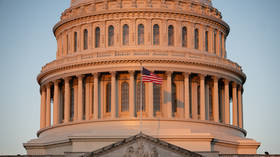ROAR: First real test for “NATO’s rival in Central Asia”

The perspectives of the CSTO rapid reaction force depend on all members of the pro-Russian military alliance.
Presidents of member states of the Collective Security Treaty Organization (CSTO) are attending on October 16 the final stage of the rapid reaction force exercise in Kazakhstan. More than 7,000 personnel from Russia, Kazakhstan, Kyrgyzstan and Tajikistan have been conducting the two-week exercise at the Matybulak training grounds since October 2.
The CSTO also comprises Armenia, Belarus and Uzbekistan. Russia is playing the leading role in the alliance.
The present exercise is the first test of the Collective Rapid Reaction Force that has been created as part of the CSTO on Russia’s initiative by heads of member states, Kommersant daily wrote.
“We have never before used at such maneuvers, military units, and law enforcement forces,” Nikolay Bordyuzha, the CSTO’s Secretary General, told Kommersant.
The exercise is aimed at practicing the deployment of the force in crisis situations on the territory of member states. Special units of the interior ministries’ troops, units of emergency situations ministries and security services’ forces will participate in the exercise, Bordyuzha said. According to the scenario of the maneuver, the rapid reaction force will practice hostage situations and emergency responses to terrorist acts.
“Emergency response has not been a particular task for the CSTO troops,” Nezavisimaya Gazeta daily wrote, but during this exercise the emergency ministries of Russia and Kazakhstan will be used for the first time “to practice the response to the consequences of an explosion at a petroleum storage depot and a chemicals plant,” the paper said. Moscow and Astana, the initiators of the creation of rapid reaction force, “are interested in reliable defense of their energy facilities,” the daily added.
“After the breakup of the USSR, this is the largest exercise in the post-Soviet space,” RBC daily quoted the CSTO’s press secretary Vitaly Strugovets as saying. However, the Collective Rapid Reaction Force still lacks soldiers from Uzbekistan and Belarus, the paper said. The presidents of these countries only signed the political agreement on the creation of the force.
At the CSTO summit in June, Uzbek president Islam Karimov refused to sign the treaty on the rapid reaction force. He urged his counterparts to change the charter of the organization and proposed, in particular, that all decisions in the organization should be made by consensus rather than by majority.
Analysts note that the “special position” of Uzbekistan is based on the principle that servicemen of the CSTO member states should act only on their own territories. In particular, Tashkent insists that the units of the rapid reaction force must not be used in case of conflicts between the CSTO member states.
Belarusian President Aleksandr Lukashenko, in his turn, did not attend the CSTO summit in June where the treaty on rapid reaction forces was signed over “a milk war” with Russia.
Observers are asking when the Belarusian president will sign the treaty. Lukashenko has recently said that all issues regarding his country joining the alliance have been solved. An operational group of the Belarusian defense ministry will attend this exercise, “but rather in the framework of military cooperation with Kazakhstan than as part of the rapid reaction force,” press secretary Strugovets told RBC daily.
Because of the position of Uzbekistan observers doubt that the rapid reaction force will be able to act on territories of all member states in the near future. The force in its present form “is really useful only at the Tajikistan-Afghanistan border in case of the Taliban’s invasion,” believes Anatoly Tsyganok, head of the Military Forecast Center.
“Belarus may resist an attack [against it], Armenia does not actually rely on Russia and other allies in the CSTO,” Tsyganok told Gazeta daily. “So, Tajikistan is the only direction where a rapid reaction force is needed.”
Perspectives of the collective force will mainly depend on the changes in the Russian army, Tsyganok believes. And the army needs a new doctrine. “Until possible threats are not defined, the means that may counter them are not defined either,” he said.
The rapid reaction force has been created “thanks to the efforts” of the Russian President Dmitry Medvedev, Kommersant daily noted. However, the first problems emerged immediately, the paper said, adding that Uzbekistan “categorically refused” to participate in the new structure.
That means that the force involves six countries and they are not able to operate on Uzbekistan’s territory, the daily stressed.
The force may be used to fight such threats as terrorism, extremism and drug trafficking. Nezavisimaya Gazeta, however, wrote that the concrete tasks are still unclear, but it is likely to act “mainly in the Central Asian region,” it added.
Russia’s security strategy until 2020 considers the CSTO “a key mechanism to counter regional military challenges and threats.” Observers believe that the pro-Russian military block may become a rival to NATO forces.
Bordyuzha said so far that there have been no plans of cooperation between the CSTO and NATO.
“Of course, we proposed to NATO to cooperate in several spheres, including those regarding fighting illegal drug trafficking,” Bordyuzha told Vesti TV channel. “But NATO has its own position. They have not decided to coordinate actions [in these spheres] with the CSTO. It is not a problem for us; we are a self-sufficient organization.”
However, Aleksandr Lukin, director of the Center of Central Asian Studies at the Moscow Institute of International Relations, believes that the course to reset relations between Russia and the US makes it possible to develop cooperation in a number of new directions.
In particular, he stressed, there are opportunities for cooperation between Western organizations and the CSTO. “So far NATO has refused to cooperate with the CSTO or even to notice it,” he wrote in Kommersant. At the same time, the Western military alliance considers the CSTO its competitor, the analyst said.
“NATO’s leadership has not even replied” to the official letter by Bordyuza with proposals about cooperation,” Lukin added. Meanwhile, the CSTO is successfully developing relations with the United Nations, the European Union, and the Organization for Security and Cooperation in Europe.
“However, there is hope that in the conditions of the new spirit of Russian-American relations and considering the importance of solving the Afghanistan problem for the new US administration, the new NATO leadership will take a more constructive stance toward the CSTO,” Lukin said.
The CSTO could help in training Afghanistan’s security forces and in the exchange of experience and operational data in the fight against drug trafficking, the analyst said. “This could be of significant assistance to the international coalition in Afghanistan,” he added.
Sergey Borisov, RT













